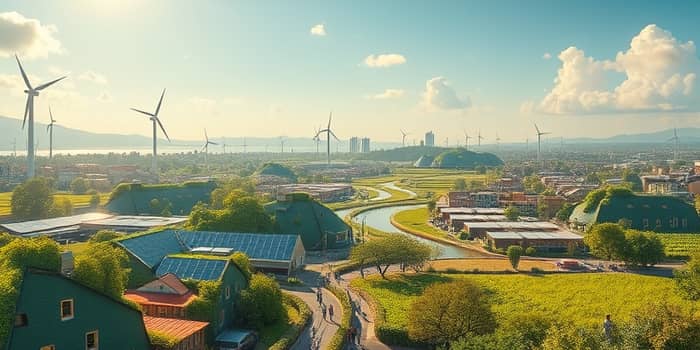
Climate change is no longer purely a threat; it’s a catalyst for financial innovation and sustainable growth. Investors have a unique chance to align returns with resilience.
By 2030, global demand for climate adaptation and resilience investments is projected to reach between $0.5 trillion and $1.3 trillion per year. This surge reflects urgent needs in infrastructure, agriculture, and public health.
In the Global South, annual adaptation financing needs are estimated at $215 billion to $387 billion through 2030, highlighting a significant emerging market. These funds can protect vulnerable communities and unlock economic potential.
Looking further ahead, the World Economic Forum estimates the investment opportunity could grow to $9 trillion by 2050, underscoring the multitrillion-dollar investment opportunity in select adaptation solutions.
The complexity of climate change demands a diversified approach, with several sectors standing out for their strong growth trajectories and societal impact.
Renewable energy continues to revolutionize power generation. Solar photovoltaic and wind technologies benefit from policy incentives and rapid cost reductions, making them increasingly competitive.
Energy storage solutions, particularly next-generation batteries, are critical to grid stability and renewable integration. Electric vehicle adoption and charging infrastructure expansion represent transformative market shifts driven by consumer demand and regulation.
Hydropower, especially small-scale and run-of-river projects, offers reliable baseload supply while minimizing ecosystem disruption. Each technology presents unique investment entry points for those seeking exposure to decarbonization.
Green infrastructure goes beyond renewable energy. LEED-certified buildings and retrofits can reduce operating costs while enhancing property values. Cities embracing smart planning invest in flood-resilient public transport, urban forests, and water-sensitive design.
In rural settings, sustainable agriculture and water resource efficiency secure livelihoods and food security. Investments in desalination and IoT-enabled water monitoring systems ensure affordable clean water for vulnerable communities, turning scarcity into industry growth.
Regulatory incentives, from green tax benefits to stricter disclosure rules, are encouraging capital flows. According to Amundi, private investors are chasing illiquidity premiums and diversification advantages in climate assets.
Yet, challenges persist. The market remains fragmented, requiring robust frameworks for valuation and risk assessment. Financing gaps, especially in developing regions, underscore the urgent need for innovative public-private partnerships.
Investors can craft resilient portfolios by integrating climate solutions at multiple stages. Venture capital and growth equity provide early exposure to disruptive startups, while buyouts offer stability in mature resilience firms.
Diversification across water, energy, agriculture, and infrastructure sectors mitigates risk and captures broad market trends. Engagement with portfolio companies on climate transition plans ensures long-term value creation.
Expert voices emphasize urgency and optimism. BCG asserts, “Investors who act now can help shape the industries that will define climate resilience—capturing commercial opportunity while driving progress.” MSCI notes many firms are undervalued, signaling underappreciated growth potential.
The convergence of climate and nature strategies, as highlighted by IIGCC’s Climate-Nature Nexus, will unlock additional value pools. As the world navigates physical risks, those who deploy capital strategically can reshape economies and communities.
Transitioning from risk to reward demands bold vision and cooperative action. By aligning investment horizons with the planet’s resilience needs, stakeholders can foster ecosystems where both nature and finance thrive.
Now is the moment to seize this multi-trillion-dollar frontier. By investing in climate adaptation and resilience, you’re not just pursuing returns—you’re building a sustainable legacy for generations to come.
References





